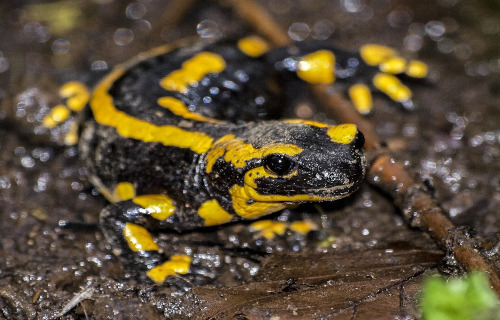
We hope that each of you, our readers, will enjoy and appreciate this article we present about these 5 Fabulous Fauna of Spain. It was certainly our pleasure to compile the information for you. May it provide you with both education and increased awareness.
These few species listed herein represent only a portion of the natural wonders found throughout the region, though. Yet, it’s our belief that they serve as excellent representations of the wonders found here. Check out some of our other articles for similar marvels.
Eurasian Brown Bear
Eurasian Bear Facts
- Starting off this article about these 5 Fabulous Fauna of Spain we present the astounding creature bearing the title of the Eurasian Bear.
- This large and majestic land mammal most frequently goes by the informative common name across its territory. It does have other alternate titles, though. These include the terms common bear, common brown bear, and European brown bear.
- In the scientific community, however, the animal is likely better known by its technical title. Fortunately, that’s a relatively easy name for the layperson to pronounce. That’s because this wonder of Nature holds the technical moniker Ursus arctos arctos.
- The animal received that interesting name due to the efforts of the esteemed Carl Linnaeus. The Swedish zoologist accomplished the first official recognition of the beautiful creature. He managed that scientifically noteworthy deed in the year 1758.
- Technically, it represents a subspecies of the brown bear. In fact, it’s one of the most common of all known subspecies of the parent species. Visually, it remains very similar to the other, making it difficult for anyone but experts to tell them apart with the eye.
- Thankfully, the Eurasian Brown Bear appears to be maintaining large and stable population base. That pleasant situation further seems to hold true throughout the entirey of its natural range. The IUCN thus now lists it as Least Concern on its Red List.
- The carnivore nonetheless faces several potential threats to its continued existence as a species. These include such perils as habitat loss and illegal hunting. The greatest danger facing it, though, likely consists of the effects of ongoing climate change.
Eurasian Brown Bear Physical Description
The wondrous Eurasian Brown Bear immediately draws the attention of anyone who encounters it in the wild. Certainly, it’s a beautiful mammal, of course. Yet it principally garners attention due to the sheer size that the species is capable of reaching in some cases.
It additionally follows a pattern that’s well established by its many kin around the world. That’s in the fact that it displays a certain degree of the physiological characteristic of sexual dimorphism. In its specific case, this trait manifests itself mainly in physical measurements.
More exactly, males typically attain a larger size than their female counterparts. This extends to both weight and length of body. The males sometimes reach a total length equaling up to 8.2 ft (2.5 m). Females, however, usually reach somewhat shorter lengths than this.
Weights also naturally differ between the sexes, given these facts. Males typically range from 550 – 660 lb (250 – 300 kg). A few mass as much as 1,060 lb (481 kg), though. Meanwhile, the females of the animal generally range in mass from 331 – 550 lb (150 – 250 kg).
Both genders of the Eurasian Brown Bear displays the same general pattern of coloring. That consists of brown fur that covers the entire body, save for the soles of the feet. The shades of this coat vary between specimens, ranging from yellow-brown to almost black.
The head also develops as highly rounded in shape. The ears develop as comparatively small, and rounded as well. Its powerful jaw holds 42 sharp, predatory teeth. The mighty animal also possesses strong, sharp claws that reach up to 3.9 in (10 cm) in length.
- Kingdom: Animalia
- Phylym: Chordata
- Class: Mammalia
- Order: Carnivora
- Family: Ursidae
- Genus: Ursus
- Species: U. arctos
- Subspecies: U. a. arctos
Eurasian Brown Bear Distribution, Habitat, and Ecology
The Eurasian Brown Bear evolved as endemic to a large portion of the globe, relatively speaking. Given its name, the location of that zone of habitation comes as no surprise. As alluded to, the animal inhabits the majority of the continents of Europe and Asia.
Within that greater range, however, its current presence is sporadic. The largest known concentration exists in Russia. Other groupings appear in such countries as Greece, Serbia, Poland, Turkey, Albania, and along the border between France and Spain, among others.
Nature and evolution did provide this mammalian marvel with an impressive adpatability in its choice of habitat. That has served it well in its struggle to survive. Generally speaking, though, it often lives in regions of wetlands, sparsely vegetated areas, and grasslands.
Yet perhaps its most highly favored type of environment is even more specific. That’s due to the fact that the largest percentage of individuals make their home in mountain woodlands. It typically does tend to avoid the highest altitudes however, due to the scarcity of food.
Intriguingly, the dietary habits of the Eurasian Brown Bear today aren’t what they once were. In the past, meat comprised about 80% of its diet. Today, though, that only forms about 10-15% of it. The change likely occurred due to reduced number of prey animals.
Being technically omnivorous, the large mammal mainly feeds on large quantities of roots, seeds, insects, fruit, and fish. When it does eat meat, it seems to favor sheep. yet it also feeds opportunistically, having no qualms about eating carrion when it comes across it.
Long Eared Owl
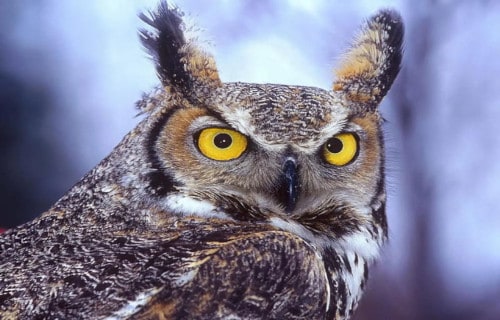
Long Eared Owl Facts
- Next up in this compendium of 5 Fabulous Fauna of Spain comes the intrepid winged wonder called the Long Eared Owl.
- Perhaps most notably, the descriptive term applied here serves as one of the common names for a truly majestic type of raptor. The animal does, however, also possess several other common names. These are used in various parts of its range.
- These alternate common names include several highly descriptive terms. They include such terms as the cat owl, the lesser horned owl, and the northern long-eared owl. This beautiful avian also goes by the scientific name of Asio otus, though.
- This gorgeous creature additionally shares a great portion of its native range with a related avian. That’s the visually quite similar species known as the short-eared owl. The two animal can most easily be distinguished while at rest.
- That’s because, at that time, the ear tufts of the Long Eared Owl become clearly visible. This constitutes the most easily recognizable physical difference between the two. In addition, the eyes of the two different creatures display different colors.
- A total of four recognized subspecies of this remarkable avian currently exist around the world. But, the Long Eared Owl has a decided advantage over many of them. Unlike some of them, this wonderful bird appears to have a sizable and stable population.
- Due to this, the IUCN presently lists it as a Species of Least Concern. This ranking appears on its Red List. It nonetheless must be considered to be facing at least a few threats to its existence. These would include habitat loss and climate change.
Long Eared Owl Physical Description
Firstly, the beautiful Long Eared Owl merits attention for other factors than merely its size. That holds true because the animal develops as an owl of medium physical size. Secondly, it does display a moderate of the characteristic of sexual dimorphism.
Individuals of this animal further attain a respectable body size. Mature specimens average roughly 16 in (40 cm) in total length. Meanwhile, wingspans average about 39 in (100 cm). Adult body weight varies significantly, but averages 15.3 oz (435 g).
The female of the stunning Long Eared Owl also grows larger and heavier than the male. These females also develops as darker in coloring. The prominent ear tufts of both sexes generally develop as black in color, though, and centered on the head.
The prominent feathers of the bird also possess a striking pattern of colors. These usually appear as a light brown in color, with vertical darker stripes present as well. The impressive eyes of this stunning species also typically grow comparatively large.
- Kingdom: Animalia
- Phylum: Chordata
- Class: Aves
- Order: Strigiformes
- Family: Strigidae
- Genus: Asio
- Species: A. otus
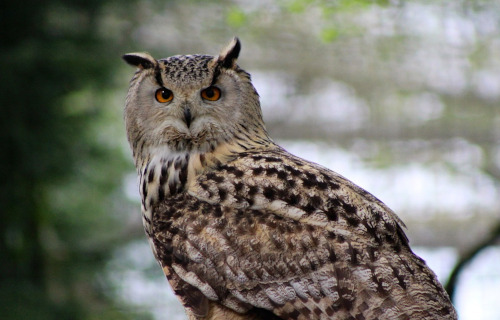
Long Eared Owl Distribution, Habitat, and Ecology
Much like many related species the Long Eared Owl evolved as partially migratory in nature. However, to the surprise of many people, this avian inhabits a relatively broad swathe of the globe. That’s due to the fact that it appears on three separate continents.
More precisely, however, it appears in a total of three separate continents. These consist of the continents of Asia, Europe, and North America. The fascinating animal commonly generally moves southward within its native range during the winter months.
The stunning raptor also has decided preferences for the type of region it chooses for its habitat. This holds true since individuals primarily inhabit forests that developed close to open areas. That further provides a combination of protective cover and good hunting.
Most individuals typically make nests in coniferous trees. Also, breeding occurs between February and July, and clutches average 4-6 eggs. The marvelous Long Eared Owl also shares one particular behavioral characteristic common to all owls.
That’s the fact that it generally hunts at night. Even among its kindred, this animal stands out for its skill as a hunter. The raptor remains renowned for being virtually silent while hunting. Its principal prey consists of a variety of small mammals, rodents, and other birds.
Fire Salamander

Fire Salamander Facts
- Our next choice for inclusion in this gathering of 5 Fabulous Fauna of Spain is the intriguing amphibian named the Fire Salamander.
- This remarkable product of Nature and evolution is most frequently known by the attention-grabbing common name given here. For the moment, it has no other widely accepted general title. But with the one it has, it really doesn’t need others.
- Within scientific circles, however, it’s usually better known by its technical title. That’s a distinctive one, though. It’s also relatively simple for the layperson to pronounce. That’s because the amphibian bears the official moniker of the Salamandra salamandra.
- It received that almost poetic name due to the efforts of Carl Linnaeus. The highly esteemed Swedish zoologist accomplished the first formal recognition of the animal as a separate and distinct species. That scientifically noteworthy deed occurred in 1758.
- It’s a fascinating creature for many reasons. Among these remains the fact that multiple subspecies of the animal exist. Currently, researchers acknowledge a total of 13 of these. Many of those also share the same habitat range, often creating much confusion.
- Fortunately, the Fire Salamander seems to be maintaining a population base that’s both stable and sufficient. That pleasant condition further appears to hold true throughout the entirety of its range. The IUCN therefore now lists the animal as Least Concern.
- The salamander still faces several potential threats to its existence, at least. Many of these stem from the actions of humans. They include such perils as habitat degradation and loss due to human expansion. It also naturally faces the threat of climate change.
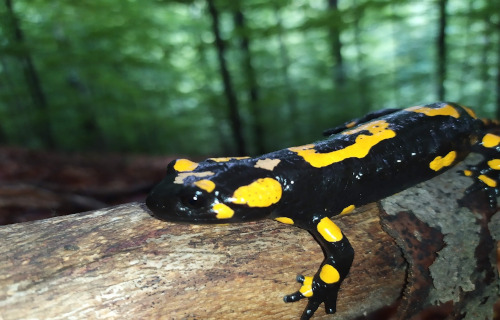
Fire Salamander Physical Description
The intriguing Fire Salamander generally captivates those fortunate enough to encounter it. The creature typically does so, however, due more to its appearance than sheer physical size. That’s true since, in that particular respect, it ranks as about average among its kin.
It does follow a pattern common in its relatives, though. That’s in the fact that it displays a certain degree of the physiological characteristic of sexual dimorphism. In the case of this amphibian, that trait manifests itself in terms of both appearance and physical structure.
Individuals of the amazing species attain an overall average length of body and tail for an amphibian. This measurement equates to between 9.8 – 11.8 in (25 – 30 cm) in adults. Typically, however, females reach a slightly greater length than their male counterparts do.
The tail usually develops as somewhat cylindrical in shape, and a little shorter than the body. The legs also develop as comparatively short. In yet another example of gender-based physical differences, both the tail and legs of the female generally remain shorter than males.
Yet it’s the color pattern of the dazzling Fire Salamander that most often garners the most attention. The back and sides present a background of a deep black color. That’s contrasted strongly by the presence of spots and or bands. These show as either a yellow or orange hue.
The underside presents a somewhat different pattern of coloring. This part of the body of the animal generally presents either a dark brown or black shade. Most examples do not have the spots or bands here, but variations and exceptional specimens do naturally occur.
- Kingdom: Animalia
- Phylum: Chordata
- Class: Amphibia
- Order: Urodela
- Family: Salamandridae
- Genus: Salamandra
- Species: S. salamandra
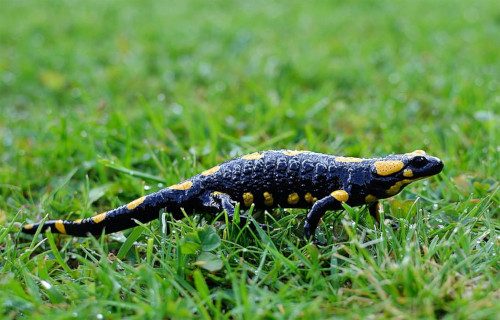
Fire Salamander Distribution, Habitat, and Ecology
The Fire Salamander evolved as native to a moderately wide expanse of the globe. This serves as a source of occasional confusion, hower. That’s because many of its subspecies appear nearly identical, and they live in other parts of the world, as well as its own range.
This species itself, though, only appears in what’s now known as Europe. There, it primarily lives in the southern and central portions of the continent. That ranges from Spain and Portugal in the southwest to Poland in the north, and to Italy and Greece in the south.
The animal also evolved decidedly strong preferences for its choice of habitat. This principally consists of forested regions. Even there, though, the amphibian displays a preference. Within these forested areas, it most often shows itself in areas of significant hills.
It does seem to prefer deciduous forests, however. In these regions, the fauna frequently conceals itself on or near mossy tree trunks or amid clumps of fallen leaves. It additionally requires the nearby presence of small streams or ponds with an abundance of clean water.
The Fire Salamander is mainly active in the evening and at night. It also comes out during the day when it’s raining, though. When not actively hunting or fleeing predators, it spends the vast majority of its time hiding under various available objects for its own protection.
It also developed as a carnivorous species, like most of its relatives. Much of its prey consists of such smaller creatures as spiders, various insects, centipedes, millipedes, earthworms, and slugs. It sometimes varies this with the addition of newts and young frogs.
Its own predators remain few and far between, however. That’s due to the fact that it’s moderately toxic. Few animals therefore feed on it, though a few are immune to or tolerant of this. Its main threats come from grass snakes, hawks, eagles, and larger reptiles.
Iberian Lynx
Iberian Lynx Facts
- Now appearing in this compilation of 5 Fabulous Fauna of Spain we give you the only wild feline in the group, the beautiful Iberian Lynx.
- This creature represents a truly beautiful species of wildcat currently only found in a small section of western Europe. That gives it an unfortunate status. The IUCN presently lists this beautiful animal as Endangered, on its published Red List.
- Currently, the primary threats to its continued existence include such factors as habitat loss and a significant reduction of its natural prey. Most regretaably, the gorgeous mammal now faces a somewhat unique threat to its continued existence.
- This occurs due to the fact that two separate diseases have significantly reduced the amount of available prey for the gorgeous wild feline. Concerted efforts by associations such as the EU LIFE-Nature project, however, do currently remain underway.
- For the moment, these ongoing rescue efforts include captive breeding and reintroduction programs. Partly due to these awesome efforts, the known population numbers of the beautiful Iberian Lynx in the wild appear to be on the rise.
- But quite lamentably, that known population still remains at only 309 individuals. This still leaves it highly vulnerable to its many threats. That’s worse, since it also now faces the threat of climate change, much like many other species around the world.
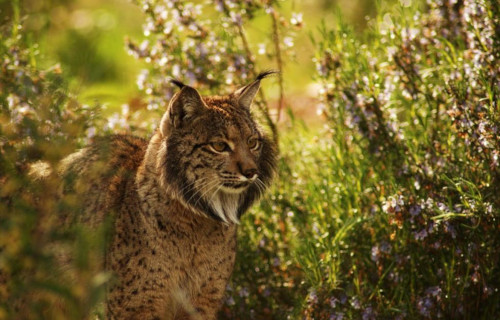
Iberian Lynx Physical Description
With its wondrous appearance, the Iberian Lynx attains an average head and body length of roughly 43 in (110 cm). The tail stays relatively short in comparison with other species of wildcat. Individuals also average about 12 in (30 cm) in length.
This particular variety of lynx also displays a moderate degree of the characteristic of sexual dimorphism, much like many of the related species. Though the lengths remain similar between the genders, the male develops significantly stockier in its build.
The male additionally averages nearly 28 lb (13 kg). The female of the species, though, averages around 21 lb (9.4 kg) in weight. The legs of the Iberian Lynx grow relatively long. Like other species of lynx, the ears on this impressive have a prominent tuft.
This Iberian Lynx also presents a magnificent color scheme, making it impossible to confuse with others. The coloring generally appears tawny, with dark spots of varying sizes. The muzzles appear slightly more elongated in shape than most varieties of wildcats.
- Kingdom: Animalia
- Phylum: Chordata
- Class: Mammalia
- Order: Carnivora
- Family: Felidae
- Genus: Otocolobus
- Species: O. manul
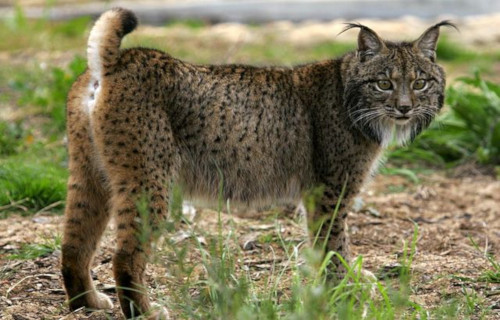
Iberian Lynx Distribution and Habitat
Fossil evidence also indicates that the Iberian Lynx has never had a significant endemic range. Luckily, that range remains sufficient for it. It once inhabited a range that encompassed a region that included portions of what is now France, Portugal, and Spain.
Currently, the remarkable mammal is only known to exist in two areas in Andalucia, Spain. Only two known breeding populations remain. Much of what previously constituted its natural habitat range has now been taken for the construction of roads and dams.
The Iberian Lynx has decided habitat preferences. It generally prefers to inhabit regions of open grassland mixed with areas of dense shrubbery. Presently, its known population is restricted to areas of maquis shrubland, lowland forests, and mountain areas.
Iberian Lynx Ecology
The Iberian Lynx has a specialized diet, consisting chiefly of rabbits. Being smaller than most species of lynx, it remains incapable of attacking larger prey. A male consumes an average of one rabbit per day, while a female with kittens consumes an average of three per day.
This animal also evolved to be rather solitary in nature, as a general principle. The exception to this occurs when mating, obviously. Individuals roam over great distances searching for food, especially with the reduction of local populations of natural prey.
It does follow an overall behavioral pattern similar to most of its realtives, though. That’s because it exhibits a high degree of territorial behavior. That’s most commonly true for males, and females part of the time, but not for them during mating season.
Litters typically consist of 2-3 kittens for the Iberian Lynx. For reasons which remain undetermined, young offspring also become violent towards each other between 30-60 days after birth, raising infant mortality rates. The average lifespan in the wild is about 13 years.
European Honey Buzzard
European Honey Buzzard Facts
- The final entry into this article about these 5 Fabulous Fauna of Spain is the second winged wonder, the European Honey Buzzard.
- This remarkable bird most frequently goes by the partially deceptive common name that we’re employing here across most of its range. Yet, it also has alternate names, as well. These include such relatively simple terms as the pern and common pern.
- Among scientists, however, such as researchers, it’s perhaps best known by its official name. That’s the relatively easy to pronounce term of Pernis apivorus. Regardless of the title one chooses to use to refer to it, though, it remains a fascinating variety of raptor.
- Like many species in its region, it owes its formal name to the respected Swedish zoologist, Carl Linnaeus. That’s because the well known researcher accomplished the first known official recognition of the animal as a separate and distinct species, in 1758.
- Despite its common name, this product of Nature and evolution isn’t closely related to buzzards. In point of fact, it’s more closely related to kites, of two other genera. The bird’s further currently placed in the Family Accipitridae by ornithologists.
- Fortunately, the European Honey Buzzard appears to be maintaining a population base that’s both stable and sufficient. This also seems to hold true throughout the entirety of its range. The IUCN therefore lists it as Least Concern on its Red List.
- The avian does face some potential threats to its continued existence. These, however, consist of the same factors facing most species around the world. Habitat loss poses a potential danger, of course. Climate change likely forms its greatest threat, though.
European Honey Buzzard Physical Description
The fabulous European Honey Buzzard quickly impresses those who encounter it. Unlike some species, however, it does so for several reasons. While simple physical size isn’t the only factor on any list of such reasons, it’s likely the one many people notice most.
The bird stands out in this manner since it’s actually larger than many related species, such as the similarly-named common buzzard. It further measures so in terms of both body length and wingspan. This surprising trait applies overall to individuals of both genders.
Also regarding genders, like many creatures, the bird displays the physiological characteristic of sexual dimorphism. In its specific case, though, the trait manifests itself in two separate ways. This fact distinguishes it from many related species in yet another way.
In terms of sheer size, the female of the species attains a slightly greater size than her male counterpart. Overall, however, individuals average about 20 – 24 in (52 – 60 cm) in body length. Wingspan, meanwhile, averages approximately 53 – 59 in (135 – 150 cm).
The second gender-based physical difference appears in terms of the coloring of the plumage. In general, this consists of varying shades of dark and light brown. Males, though, develop a bluish-gray head, while that of the female remains brown, like the rest of the body.
The European Honey Buzzard also has a longer neck than most of its relatives. The head’s comparatively small, though the beak’s powerful. It also has a longer tail than most. It’s further evolved talons that are comparatively straight, also setting it apart from its peers.
- Kingdom: Animalia
- Phylum: Chordata
- Class: Aves
- Order: Accipitriformes
- Family: Accipitridae
- Genus: Pernis
- Species: P. apivorus
European Honey Buzzard Distribution, Habitat, and Ecology
Fortunately, the fabulous European Honey Buzzard evolved as native to a relatively broad section of the globe. Even more, however, it also engages in seasonal migrations, like many other birds. This only serves to increase the territory it appears in to even greater extents.
Firstly, this stunning raptor lives its warmer seasons across the majority of the continent of Europe. There, it only avoids the most northerly regions. Secondly, though, it migrates to more tropical regions in Africa. It thereby effectively inhabits two separate ranges.
Like many varieties of avians, though, it also displays a fairly extensive adaptability regarding its choice of precise habitat within those broader ranges. In the more pristine ecosystems it makes appearances in, it displays a strong preference for areas of woodlands.
It nonetheless shows little reservation about making its home in areas with a moderate human presence. In fact, in many parts of Europe, it’s frequently spotted in the vicinity of plantations of various types. It also sometimes nests in larger parks with sufficient trees.
The dazzling European Honey Buzzard also evolved in another manner that sets it apart from many others. That manifests in its diet. That’s because this particular bird is a highly specialized feeder. Even here, though, the raptor distinguishes itself yet again.
Less commonly, however, it sometimes consumes small reptiles, mammals, and even other birds. It primarily consumes both the larvae and the nests of hornet and wasps, however. It additionally represents the only known predator of the dreaded Asian Hornet!

5 Fabulous Fauna of Spain
We hope that each of you enjoyed reading, and hopefully learning from, this article we’ve written for you about these 5 Fabulous Fauna of Spain. It’s also our hope that doing so has left you with either a new or renewed appreciation for such wonders of Nature.
Unfortunately, however, many of their kindred around the world now find themselves facing strong threats to their continued existence as a species. Many of those dangers, in fact, stem from the actions of mankind. We must do all we can to protect and preserve them all.
Check out our other articles on 5 Remarkable United States Reptiles, 7 Stunning Pacific Ocean Species, Africa’s Many Geological Masterpieces, 5 Incredible Invertebrates of Japan
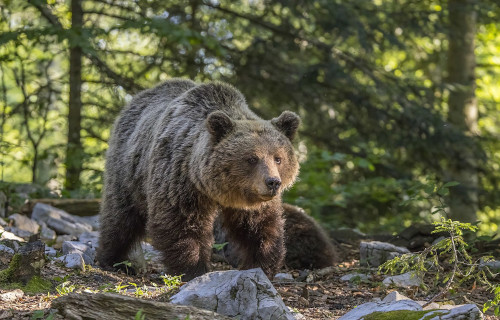
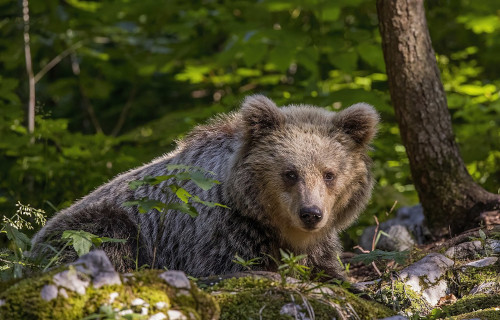
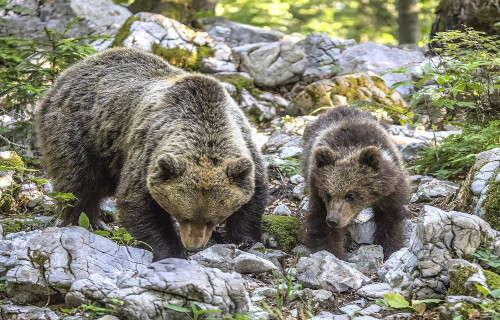
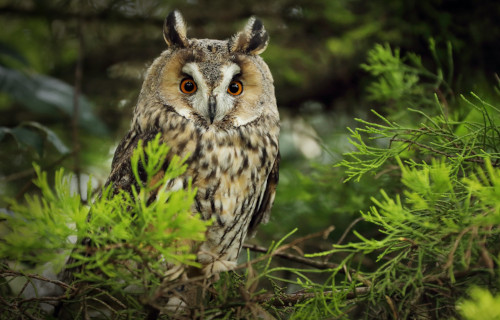
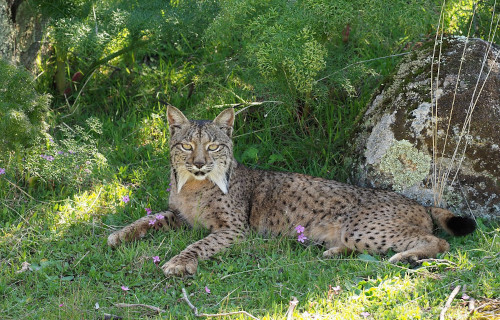
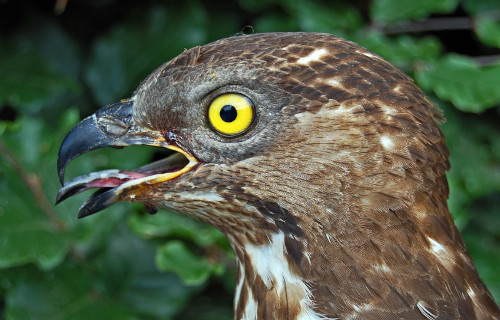
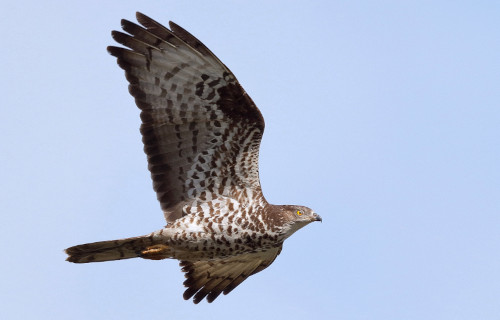
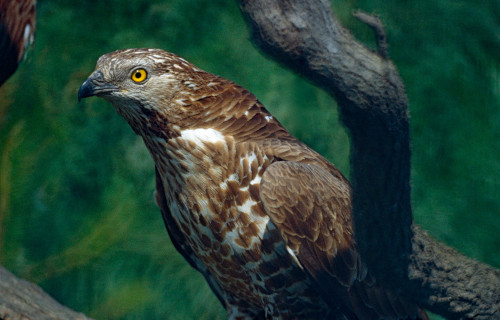









Leave a Reply